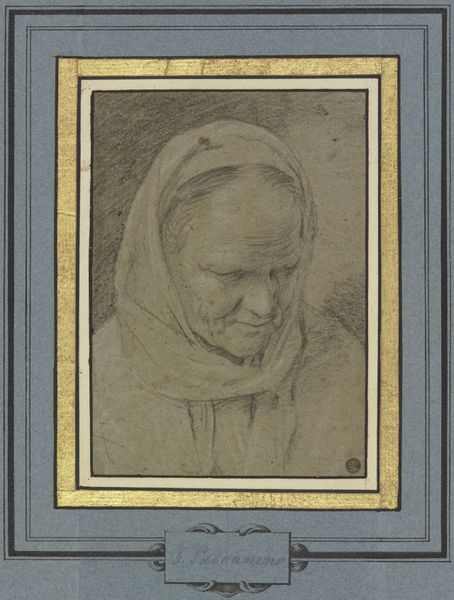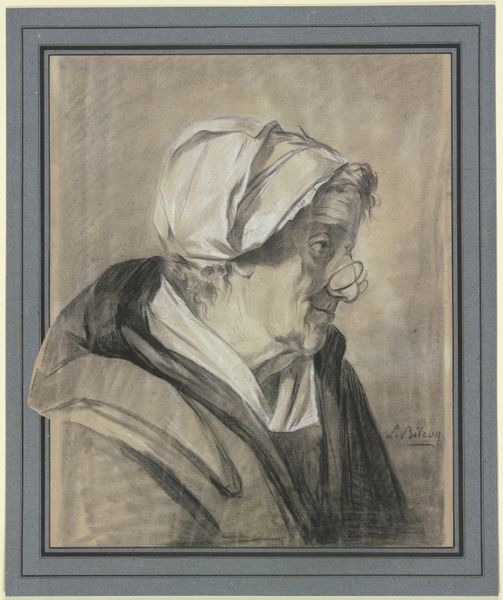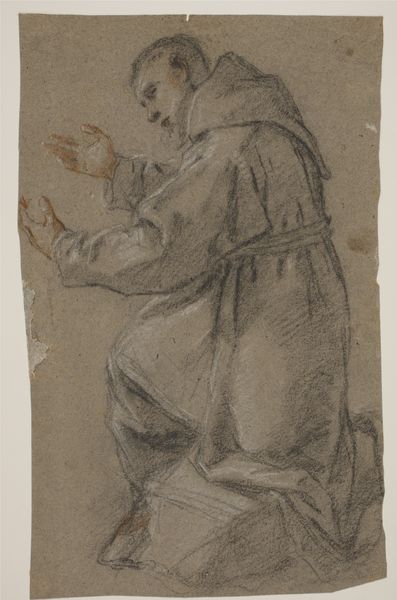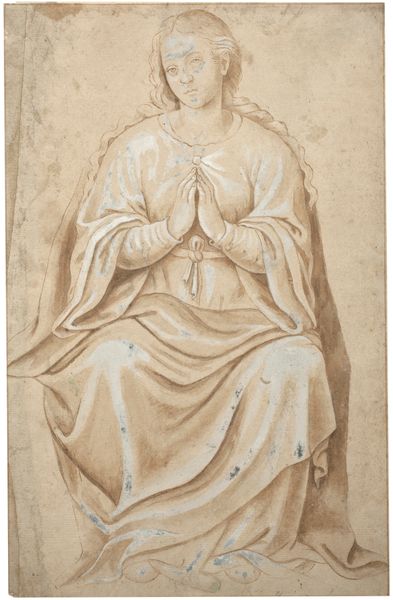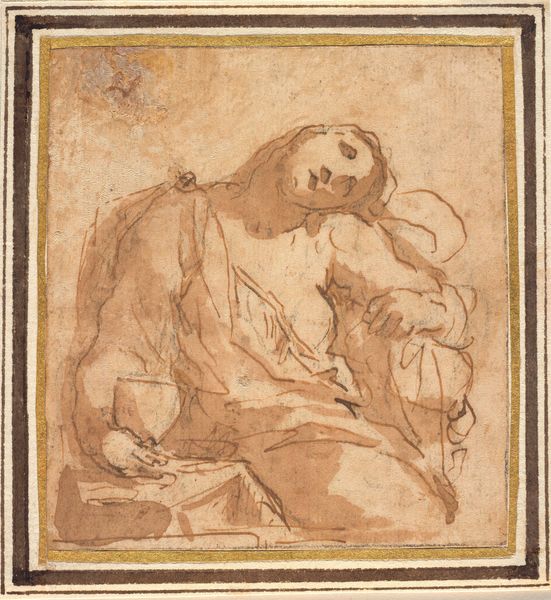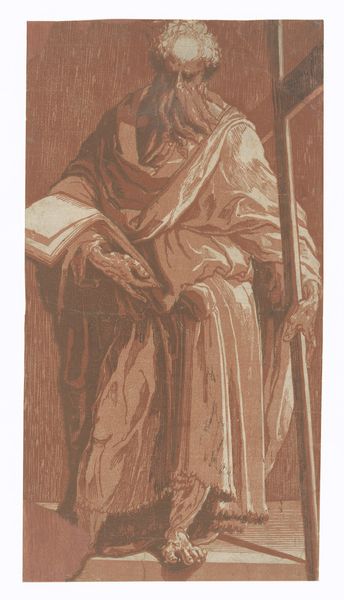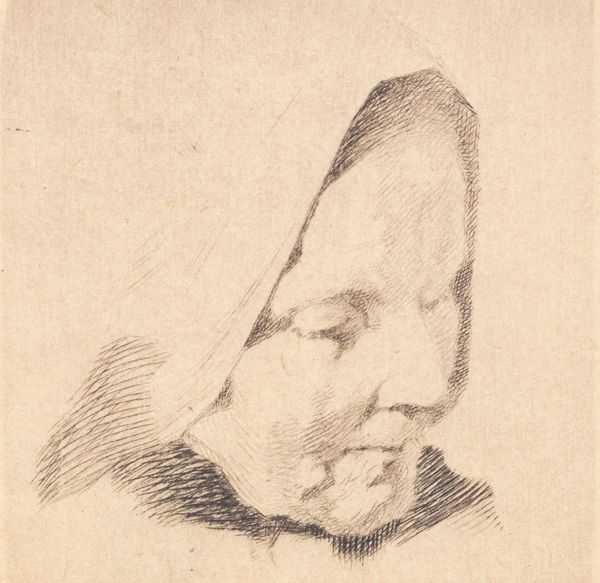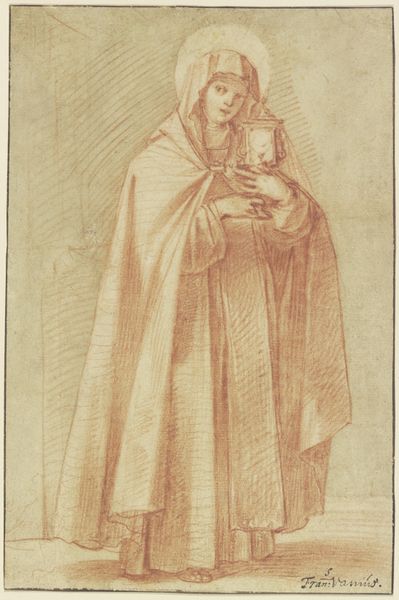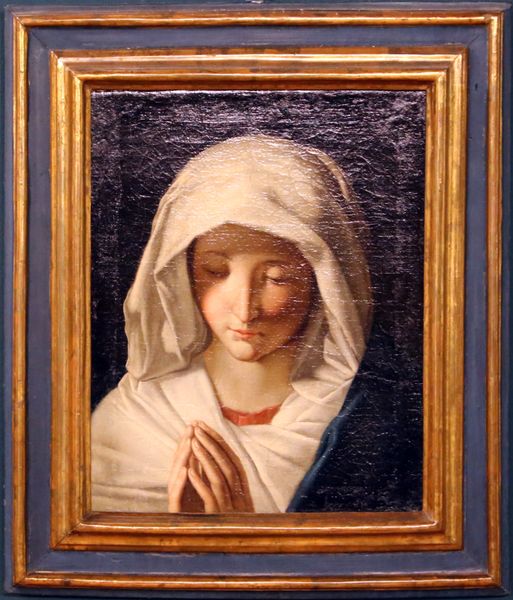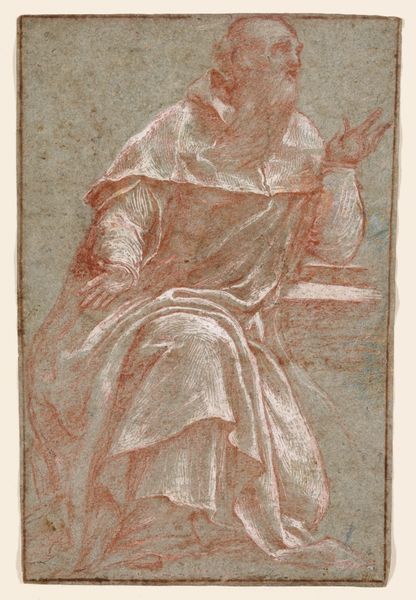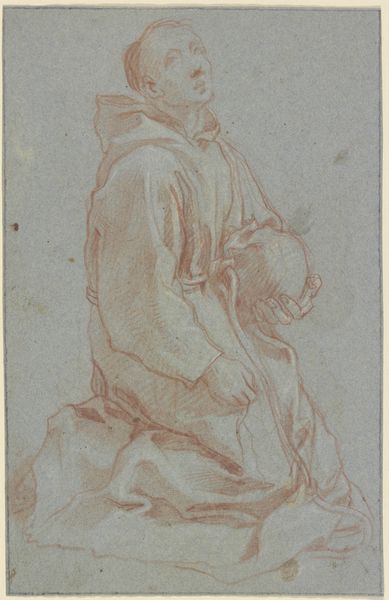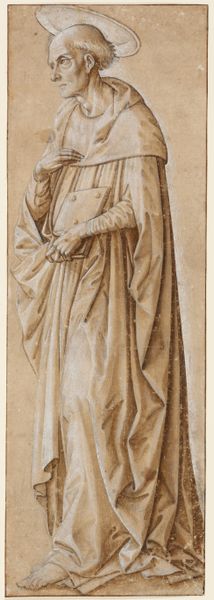
drawing, red-chalk, paper, chalk
#
portrait
#
drawing
#
baroque
#
red-chalk
#
figuration
#
paper
#
13_16th-century
#
chalk
#
14_17th-century
#
history-painting
#
watercolor
Copyright: Public Domain
Gian Antonio Burrini rendered this bust of a praying monk in sanguine chalk sometime before his death in 1727. Burrini would have prepared this sheet of paper with a ground, giving it a slightly toothy texture, perfect for catching the powdery pigment. Look closely, and you can see how the chalk is layered, giving a soft, almost hazy effect. Sanguine chalk, with its warm, reddish-brown hue derived from iron oxide, was a favorite of Renaissance and Baroque artists. It allowed for subtle gradations of light and shadow, ideal for studies of the human form. Chalk enabled Burrini to create a sense of depth and volume, particularly evident in the folds of the monk's habit and the delicate rendering of his hands. Drawings like this were not always considered finished works of art, but rather studies, a means to an end. They are, however, incredibly important to our understanding of artistic process. We gain insight into the artist's hand, and the many hours of labor involved in the production of a drawing like this.
Comments
No comments
Be the first to comment and join the conversation on the ultimate creative platform.

